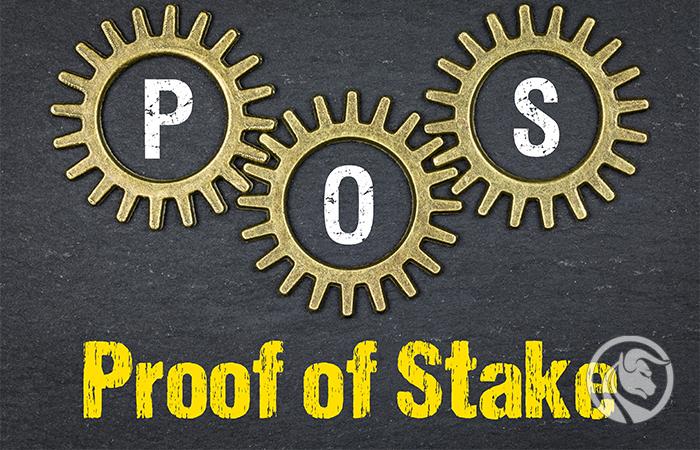Proof of Stake - what is it and how does it work?
Cryptocurrencies are based on the Proof of Work or Proof of Stake consensus algorithm. Hybrid solutions have also appeared recently. Okay, but what exactly does that mean? What is the Proof of Stake consensus algorithm and how does it work? Check out our short and specific guide.
We have known the Proof of Stake consensus algorithm since 2011, when its assumptions were presented on the Bitcointalk forum - the same that was the beginning of its existence Bitcoin and the world of cryptocurrencies. Previously, there was only the Proof of Work algorithm, but it had limitations that caused a number of problems. Proof of Stake helped solve them.
Be sure to read: Proof of Work - what is it and how does it work?
How Proof of Stake works
Both algorithms work to reach consensus in blockchain networks - that is, lead to confirmation that a given operation is real and that both parties agree to it. Thus, they confirm that the given cryptocurrency was / is in the possession of one of the parties and is to be transferred to the other. There are a lot of nodes, and the algorithm is to choose another one - so as not to overload the number of operations of one node, and also so that one node does not confirm several transactions of the same person or company, which could lead to possible abuses .
Therefore, in the Proof of Stake algorithm, the so-called pseudo-random node selection process. So not only the richest (i.e. those who have the most units of a given cryptocurrency) are selected, but the selection is also purely random.
The Proof of Stake algorithm also uses differently the fees for transactions that go to the nodes. However, in the Proof of Work algorithm, they are created by extracting new units, which reward miners. In PoS, however, nodes determine the rates they block on the network. The higher it is, the greater the chances of being selected, but this is not the only criterion. The selection process also includes random selections and choices based on the "stake age", i.e. how long the cryptocurrencies are kept in the account.
The random method is based on selecting the nodes that have the lowest value, the so-called hash and the highest rate, but the rates are open in the blockchain network, so in order to avoid tracing who will accept the next transaction, the staking time (i.e. cryptocurrency is kept) is added to the equation by counting it by multiplying the number of days in which the cryptocurrency is in possession knot, by the number of coins that are stacked. No one from the outside knows this anymore, so it is impossible to guess which node will receive another transaction for confirmation and it cannot be used for evil purposes.
What's more, after the transaction is approved, the node is frozen for a moment and cannot confirm the next ones, so that the largest nodes do not dominate the blockchain network. The rules also change depending on the cryptocurrency and the network - each has its own combination methods when selecting a node that approves transactions and adds them to the blockchain. The possible "escape" of the node is also secured. When he stops confirming the transaction, the funds earned by him are released only after checking that he has not acted as an intermediary in adding false blocks.
The Proof of Stake algorithm pays off for everyone
Using the PoS algorithm is profitable not only for people or companies trading cryptocurrencies, because it speeds up their transactions. They are also safer, because nodes simply earn better from applying more to the evaluation of transactions than superficial approving and passing unclear ones. Each detection of a fraudulent transaction results in the loss of some of the previously earned cryptocurrencies and the loss of the ability to approve subsequent transactions. In order to perform an impunity fraud, the node would have to have most of the cryptocurrencies and carry out the so-called attack 51%, which for obvious reasons would be simply unprofitable.
This is why the Proof of Stake algorithm is considered not only faster but also safer than Proof of Work. This is possible thanks to more nodes - which almost anyone can create inexpensively. It also influences even greater decentralization, which is also an advantage for the network and the cryptocurrency it supports.






















![Forex Club – Tax 9 – Settle tax on a foreign broker [Download the Application] Forex Club - Tax 9](https://forexclub.pl/wp-content/uploads/2024/02/Forex-Club-Podatek-9-184x120.jpg?v=1709046278)
![Trading View platform – solutions tailored to the needs of traders [Review] trading view review](https://forexclub.pl/wp-content/uploads/2024/03/trading-view-recenzja-184x120.jpg?v=1709558918)
![How to connect your FP Markets account to the Trading View platform [Guide] fp markets trading view](https://forexclub.pl/wp-content/uploads/2024/02/fp-markets-trading-view-184x120.jpg?v=1708677291)
![How to invest in ChatGPT and AI? Stocks and ETFs [Guide] how to invest in chatgpt and artificial intelligence](https://forexclub.pl/wp-content/uploads/2023/02/jak-inwestowac-w-chatgpt-i-sztuczna-inteligencje-184x120.jpg?v=1676364263)


![WeWork – the anatomy of the collapse of a company valued at $47 billion [WeWork, part II] wework bankruptcy story](https://forexclub.pl/wp-content/uploads/2024/04/wework-bankructwo-historia-184x120.jpg?v=1711729561)
![Adam Neumann – the man who screwed up Softbank [WeWork, part AND] adam neumann wework](https://forexclub.pl/wp-content/uploads/2024/04/adam-neumann-wework-184x120.jpg?v=1711728724)





![How to transfer shares to another brokerage office [Procedure description] how to transfer shares to another brokerage house](https://forexclub.pl/wp-content/uploads/2024/03/jak-przeniesc-akcje-do-innego-biura-maklerskiego-184x120.jpg?v=1709556924)

![The most common mistakes of a beginner trader - Mr Yogi [VIDEO] Scalping - The most common mistakes of a beginner trader - VIDEO](https://forexclub.pl/wp-content/uploads/2024/03/Scalping-Najczestsze-bledy-poczatkujacego-tradera-VIDEO-184x120.jpg?v=1711601376)
![Learning patience: No position is also a position - Mr Yogi [VIDEO] Scalping - Learning patience - No position is also a position - VIDEO](https://forexclub.pl/wp-content/uploads/2024/03/Scalping-Nauka-cierpliwosci-Brak-pozycji-to-tez-pozycja-VIDEO-184x120.jpg?v=1710999249)
![When to exit a position and how to minimize losses - Mr Yogi [VIDEO] Scalping - When to exit a position and how to minimize losses - VIDEO](https://forexclub.pl/wp-content/uploads/2024/03/Scalping-Kiedy-wyjsc-z-pozycji-i-jak-minimalizowac-straty-VIDEO-184x120.jpg?v=1710336731)

















